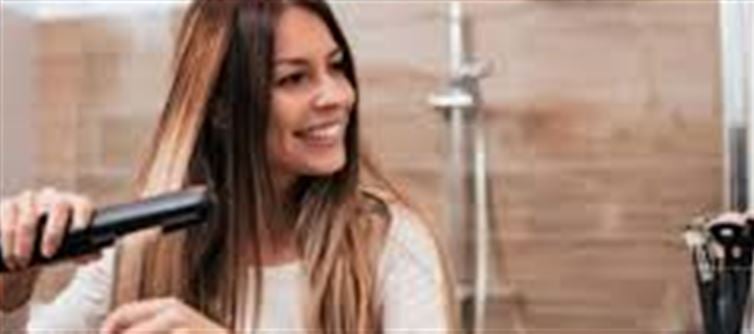
Hair straightening and styling tools are a staple in many beauty routines, but recent health warnings suggest even short-term use can affect lung health. Understanding the risks and taking precautions is crucial for long-term safety.
1. Heat-Activated Chemical Fumes
- Hair straighteners, especially chemical-based treatments, release fumes when heated.
- These fumes often contain formaldehyde, ammonia, and other volatile compounds, which can irritate the respiratory system.
- Even 10 minutes of exposure can cause coughing, throat irritation, or shortness of breath in sensitive individuals.
2. Risk of lung Irritation
- Regular inhalation of chemical fumes can lead to chronic bronchial irritation.
- People with pre-existing conditions like asthma or allergies are particularly vulnerable.
- Symptoms may include wheezing, difficulty breathing, and tightness in the chest.
3. Long-Term Respiratory Impact
- Prolonged exposure over months or years may increase the risk of lung infections or chronic respiratory issues.
- Some chemicals in hair straightening treatments have been linked to pulmonary toxicity, affecting overall lung function.
4. Skin and Eye Irritation
- Fumes can also irritate the eyes, nose, and skin, causing redness, watering, or rashes.
- Ventilation is key when using chemical or heated hair tools to minimize exposure.
5. Safer Hair Styling Tips
- Use natural or chemical-free straighteners when possible.
- Ensure proper ventilation in your room, such as opening windows or using an exhaust fan.
- Limit duration and frequency of straightening sessions.
- Wear a mask if using chemical hair treatments frequently.
6. Alternative Styling Methods
- Opt for heat-free hair straightening techniques, like wrapping or braiding damp hair.
- Try ceramic or tourmaline straighteners that emit less harmful fumes.
- Regular hair care with natural oils and masks can reduce the need for daily styling.
7. Bottom Line
Even just 10 minutes of hair straightening can release chemicals that affect lung health, particularly with frequent use. Using safer products, limiting exposure, and ensuring ventilation are essential steps to protect your respiratory system while keeping your hair sleek.
Disclaimer:
The views and opinions expressed in this article are those of the author and do not necessarily reflect the official policy or position of any agency, organization, employer, or company. All information provided is for general informational purposes only. While every effort has been made to ensure accuracy, we make no representations or warranties of any kind, express or implied, about the completeness, reliability, or suitability of the information contained herein. Readers are advised to verify facts and seek professional advice where necessary. Any reliance placed on such information is strictly at the reader’s own risk..jpg)




 click and follow Indiaherald WhatsApp channel
click and follow Indiaherald WhatsApp channel